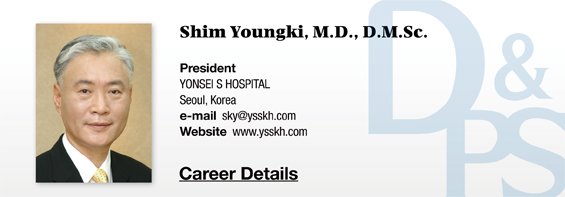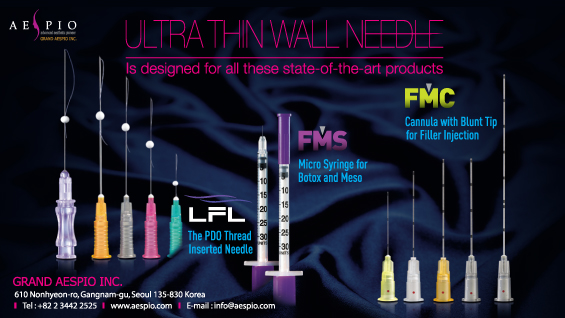Skin complications of lymphedema
Erysipelas
Lymphocutaneous fistulae
Skin changes such as mycosis, eczema, and keratosis, etc.
Skin papilloma
Angioma, pseudo-Kaposi's syndrome
Angiosarcoma
Once complications occur, the disease gradually progresses and aggressive treatment is needed.
Lymphedema; Management and Prevention Strategy for Patients
Regular lymph drainage massage is recommended to promote lymph circulation.
Do not overuse a pneumatic compression device to relieve edema. Always consult the physician.
Do regular exercise to reduce edema.
Wear medical compression stockings and compression bandage daily.
Avoid standing or sitting for a long time (particularly after uterine cancer surgery).
Avoid compressing limbs with lymphedema.
Measure the blood pressure on the arm contralateral to the surgical site.
Wear jewelry or a watch on the arm contralateral to the surgical site.
Avoid wearing a shoulder bag on the side of the surgical site.
Avoid wearing tight clothes.
Tight clothes can cause circulatory problems.
Avoid wearing accessories that may block circulation such as a watch, tight shoes or belt.
Avoid wearing a bra. If necessary, wear it loose.
Use light breast pads.
If padding is needed, wear wide bra straps.
Avoid tight inner wear in the inguinal area.
Avoid wearing tight shoes. Wear flat shoes with soft soles.
[Advertisement] ULTRA THIN WALL NEEDLE – Manufacturer: AESPIO(www.aespio.com)
Avoid heat.
Sunbathing and sunburn can stress the lymphatic glands and exposure to the sunlight should be avoided.
If sun exposure is inevitable, cover with clothing or use a parasol.
Hot packs or ice packs are prohibited. Sauna and hot baths should also be avoided.
Avoid blowing hot air from the hair drier directly on the shoulder or arm.
Avoid skin infection and damage.
Wear long sleeves or use insect repellents to prevent insect bites.
If blood withdrawal, IV injection or intramuscular injection are necessary, avoid receiving on the side of the surgery.
Avoid insect bites. Avoid traveling to tropical regions (If travel is inevitable, take diethylcarbamazine, an anti-filariasis drug).
Avoid getting hurt or sustaining a wound.
Do not irritate the skin (Avoid suction cups, acupuncture, moxa treatment, injection, blood pressure measurement, blood withdrawal, etc.).
Use an electric blade for shaving.
Avoid walking barefoot outside.
Practice caution not to cause cuts while clipping nails.
Use the unaffected hand to hold a cigarette if quitting is not an option.
Maintain the skin surface clean and healthy to prevent skin complications.
Use a hypoallergenic and mild soap for cleansing the body.
Apply a moisturizing lotion immediately after a bath or shower.
Maintain the feet clean and toes dry to prevent infection (tinea pedis).
Use a non-irritating, mild moisturizer or cream.
Visit the ER immediately if inflammation or rash are present on the affected area and fever or chills develop.
Maintain an ideal body weight.
Avoid being overweight and lose weight if necessary.
Obesity can compromise lymph circulation.
Avoid strenuous movement.
Avoid strenuous exercise such as mild overexertion, sudden movement. Prevent muscle fatigue.
Do not hold heavy bags with a lowered arm.
Avoid repeated pulling, pushing or using a vacuum cleaner.
Avoid doing house chores all at once. Spread the chores out over time and take frequent rests.
Do light physical exercise regularly.
Continue regular exercise that fits your physical strength.
Maintain the heart rate at 60-80% of maximal heart rate (subtract your age from 220). Exercise for 30-40 minutes 3-4 times a week.
If your age is 50, your maximal heart rate is 170. And 60-80% of 170 is 102-136. Your heart rate per minute should be 102-136.
Use compression stockings or compression bandage during exercise to provide support to the swollen area.
Swimming, walking and cycling are recommended types of exercises that help edema.
Always use orthopedic insoles for posture adjustment.
Maintain a nutritious diet. There are no particular foods that need to be avoided in lymphedema.
Increase the intake of fresh vegetables, fruits, grains and legumes.
Minimize fat intake.
Abstain from eating fast foods and eat healthy, natural foods.
Maintain a low-sodium diet. Minimize salt intake.
Minimize caffeine and alcohol intake.
Develop ways to destress and relax.
Stress and psychological problems may have negative impact on lymph circulation.
Community services and religious activities are recommended.
-To be continued-





















